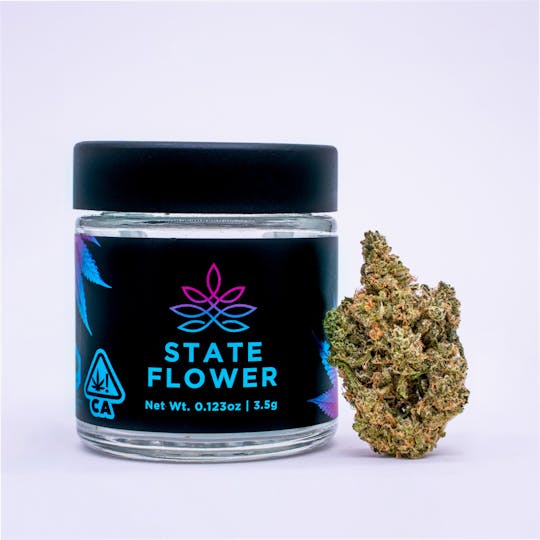
Durban Poison
Exclusive pheno
Sativa Dominant
ThC: 24–26%
Pure Sativa. Rich in THCv, making it an effective appetite suppressant, with a super uplifting/energetic effect. State Flower co-founder, Daniel Wacks, and our friends at Purple City Genetics in Oakland have a lot in common, including South African parents and a love for Durban Poison. PCG popped some real-deal Durban seeds for us that were collected in South Africa in the 1980s by a family friend. Despite the seeds being nearly 40 years old, eight were viable. We came together to test all eight phenos. For us the Durban #6 checked every box, with a little something extra...a slight blueberry aftertaste.
Tasting Notes:
Peppermint, Pine Needles, Blueberry
- Earthy
- Woody
- Spicy/Herbal
Started from the relentless pursuit to grow truly exceptional flowers, State Flower evolved from a boutique approach to cultivation into state-of-the-art operations, while maintaining an ultra-premium level of quality. As the cannabis industry transitions from its humble roots, we are proud to be leading the way into this new phase of professional standards and practices.
Durban Poison has deep roots in the Sativa landrace gene pool. The strain’s historic phenotypes were first noticed in the late 1970s by one of America’s first International strain hunters, Ed Rosenthal. According to cultivation legend, Rosenthal was in South Africa in search of new genetics and ran across a fast flowering strain in the port city of Durban. After arriving home in the U.S., Rosenthal conducted his own selective breeding process on his recently imported seeds, then begin sharing. Rosenthal gave Mel Frank some of his new South African seeds, and the rest was cannabis history.
Frank, who wrote the “Marijuana Grower’s Guide Deluxe" in 1978, modified the gene pool to increase resin content and decrease the flowering time. In search of a short-season varietal that could hit full maturation on the U.S. East Coast, Frank’s crossbreeding efforts resulted in two distinct phenotypes, the “A” line and “B” line. The plant from Frank’s “A” line became today’s Durban Poison, while the “B” line was handed off to Amsterdam breeder David Watson, also known as “Sam the Skunkman.”
Durban Poison has a dense, compact bud structure that’s typical of landrace Indica varieties, but the flowers’ elongated and conical shape is more characteristic of a Sativa.



